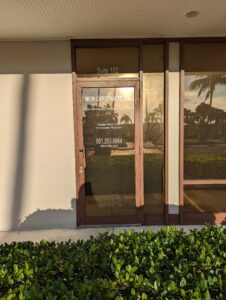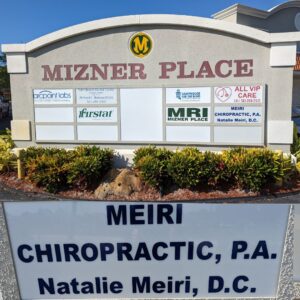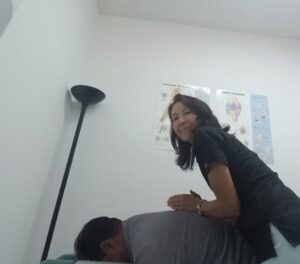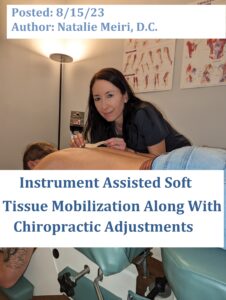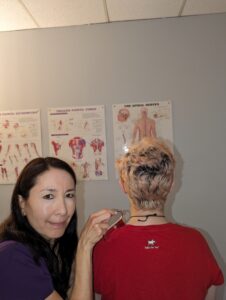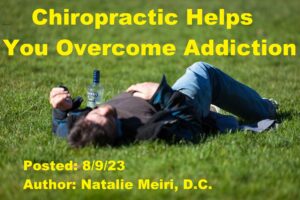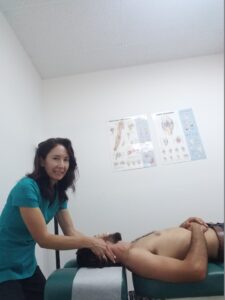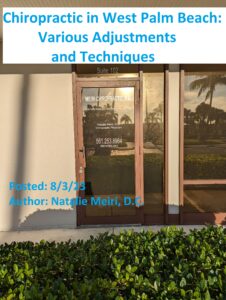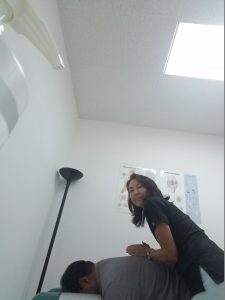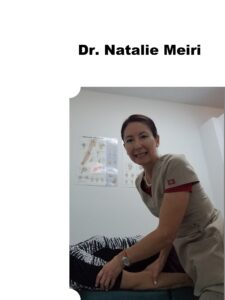From Dr. Natalie Meiri’s Clinical Pearl Stories:
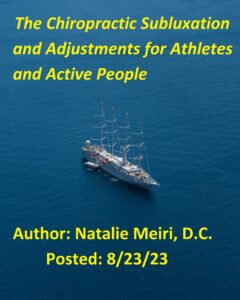
This was a 34 year old male patient with a chief complaint of pain which he described as “stiffness” and dull in his neck and back. To be HIPAA compliant, I will call him Ted instead of his real name. Ted was an active duty military/law enforcement officer who was currently working on a boat for a few weeks. He stated the rocking and constant motion of the boat made his gait unnatural. Recently, he started experiencing “stiffness” and decreased range of motion.
In the past, Ted had also injured his left glenohumeral (shoulder) joint. So this had happened 5 years ago and he had physical therapy for it. Furthermore, he stated from time to time it seemed to “act up”. Ted was an avid long distance runner and had to exercise/train regularly for his military career. He stated he came to see me before “things got really bad”.

Ted’s Examination
Upon examination Ted had decreased range of motion in his cervical (neck), thoracic (mid back), lumbar (low back) and left glenohumeral (shoulder) joint. Although there were no positive orthopedic or neurological tests, Ted definitely had areas of chiropractic subluxations (joint restrictions). These subluxations were found by inspection/observation and palpation (static and motion) which revealed tender intersegmental dysfunction. Additionally, soft tissues/muscles needing manipulation were located via deep digital palpation. Indeed, Ted’s condition was diagnosed as the Joint Subluxation/Dysfunction Syndrome (JSDS).
Ted’s Treatment
Firstly, Ted received chiropractic adjustments/ manipulation to his neck, spine and left shoulder along with soft tissue work (myofascial release, pressure point and various post-isometirc relaxation procedures). Secondly, recommendations were made on nutrition and posture. Thirdly, therapeutic exercises for stretching and strengthening were given.
Ted responded to his chiropractic treatment. Moreover, he had increased range of motion and less stiffness immediately following his first visit. He was to return in 2 weeks for a follow up.
What is the Chiropractic Subluxation/ Joint Subluxation/Dysfunction Syndrome (JSDS)?
A Joint Subluxation/Dysfunction Syndrome (JSDS) diagnosis is defined by a combination of signs and symptoms for dysfunction of spinal, pelvic, or peripheral (limb) joints. It is a functional (biomechanical) diagnosis, not a structural (pathoanatomic) diagnosis. If you have JSDS, your spinal and peripheral motion segments and associated soft tissues are the source of your symptoms.
The chiropractic subluxation is the alteration of the normal dynamic, anatomic, or physiologic relationships of contiguous (neighboring) articular (joint) structures. It is a motion segment in which alignment, movement integrity, or physiologic function is altered. However, the contact between the joint surfaces remains intact. So the ORTHOPEDIC SUBLUXATION term which means a partial or incomplete dislocation, is different from the chiropractic subluxation.
And this aberrant relationship between two adjacent articular structures may have functional or pathologic sequelae (consequence of disease). The chiropractic subluxation can ultimately cause an alteration in the biomechanical or neurophysiologic changes to occur not only to your articular structures, but also your entire body systems.
Meiri Chiropractic in
West Palm Beach, FL
Meiri Chiropractic serving West Palm Beach, Jupiter, Palm Beach Gardens and North Palm Beach offers chiropractic treatment for various ailments and maintenance/wellness care. Your chiropractor will examine, diagnose and determine your best course of chiropractic treatment for your condition and goals. Call us in West Palm Beach at 561-253-8984 to schedule an appointment or to find out more about The Chiropractic Subluxation and Adjustments for Athletes and Active People. Start getting the relief you need and the wellness you deserve!
